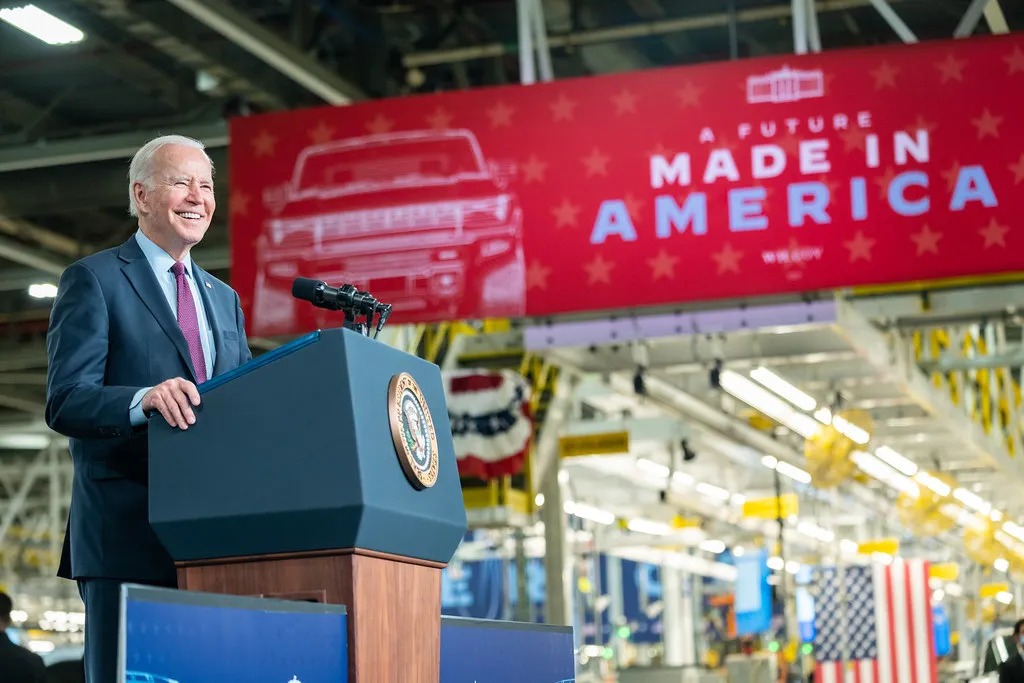The Biden administration is tackling the daunting task of making America’s industrial freight transportation system more environmentally friendly. The White House announced Wednesday that it has set a goal of making 30 percent of industrial trucks sold emission-free by 2030 and 100 percent by 2040.
In addition to these non-binding goals, the White House is meeting with stakeholders from the commercial vehicle, shipping and infrastructure industries on Wednesday to help implement its agenda. The roundtable is designed to advance the Biden administration’s goal of “advancing the expansion of the infrastructure needed to make a zero-emission freight transportation ecosystem a reality in the United States.”
Not surprisingly, the freight industry uses a lot of energy and produces a corresponding amount of pollution. Bloomberg notes that the transportation sector emits about 29 percent of U.S. greenhouse gas emissions, and freight transportation (including shipping, trucking, and trains) accounts for about a third of that number. So it’s safe to assume that the American freight industry is responsible for about 10 percent of the country’s CO2 emissions.
As part of the election-year rollout, the Biden administration plans to seek public comment on heavy-duty vehicle charging infrastructure, suggesting the details of the plan have not yet been finalized. The White House wants to avoid a fragmented industrial electric vehicle charging system without a universally agreed upon standard. The industry has apparently settled on Tesla’s NACS as the de facto choice in the lightweight consumer goods space.
In addition to the newly announced industry goals, the Environmental Protection Agency (EPA) is providing approximately $1 billion to the Biden administration under the Inflation Reduction Act (IRA) to fund Class 6 and 7 vehicles (school buses, garbage trucks and delivery trucks). to replace electrical equivalents.
The IRA requires that at least $400 million of these funds go to local communities most affected by industrial pollution. According to the White House, 72 million Americans live near truck freight routes and bear the brunt of their short-term production. Unfortunately, but not surprisingly (given the country’s history), people of color and people from low-income households are most likely to be severely affected by high levels of environmental toxins.
Given the urgency of the global climate crisis and the role of the freight industry, the White House’s goals are admirable. However, a significant problem remains: These are voluntary, non-binding resolutions that could — and, given public comments, almost certainly would — be reversed by a second Trump administration should the serial jester return to office next year. As with many other aspects of the country’s and the world’s future, U.S. voters will decide the outcome in November.
